Butser Ancient Farm
If you want a fabulous experience of the ancient past, a trip to Butser Ancient farm is a ‘must’.

I visited this wonderful site during February half term on a wet and cold day. Despite that, I was warmly received by the volunteers and experimental archaeologists, and prepared to immerse myself in the Iron Age. It was a fabulous day and added greatly to my understanding and research for the fourth and final book in the series Tree Spirits in Time. This book is to be set in the Age of Aries, a fire sign, reflected in the dominant technology of that age.
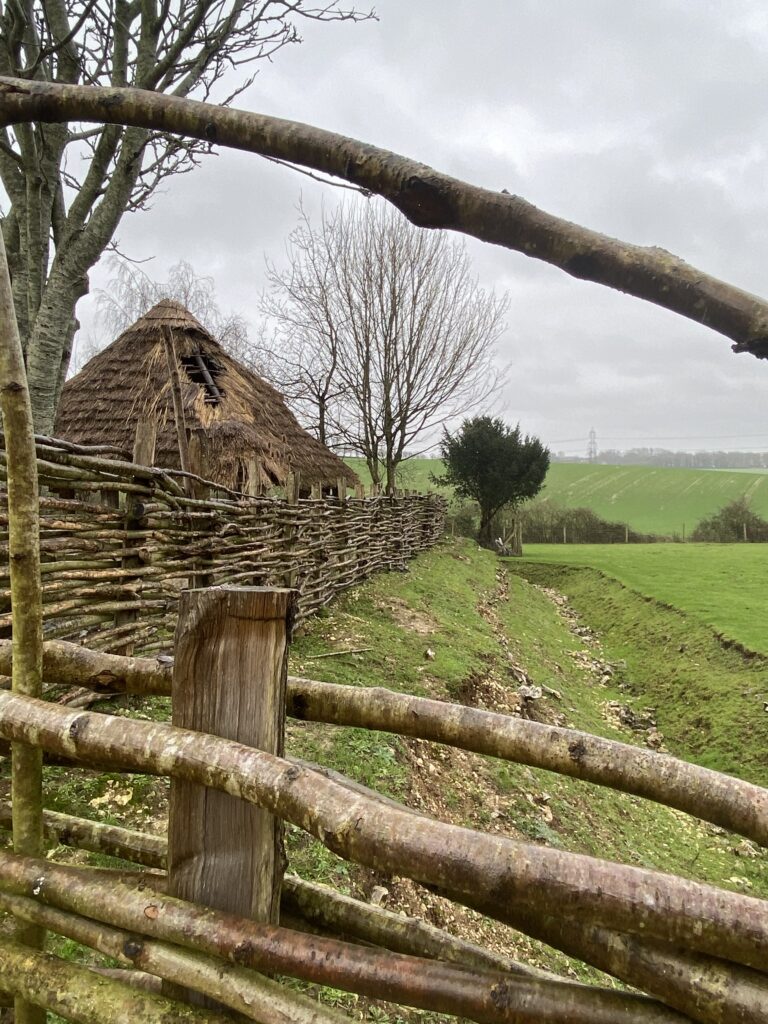
Experimental archaeology is a brilliant way to bring alive the bare bones of the past. The Iron Age was the first site to be developed there, rebuilding houses from footprints left in the earth; including houses from a lake village near Glastonbury and the hills of North Wales.
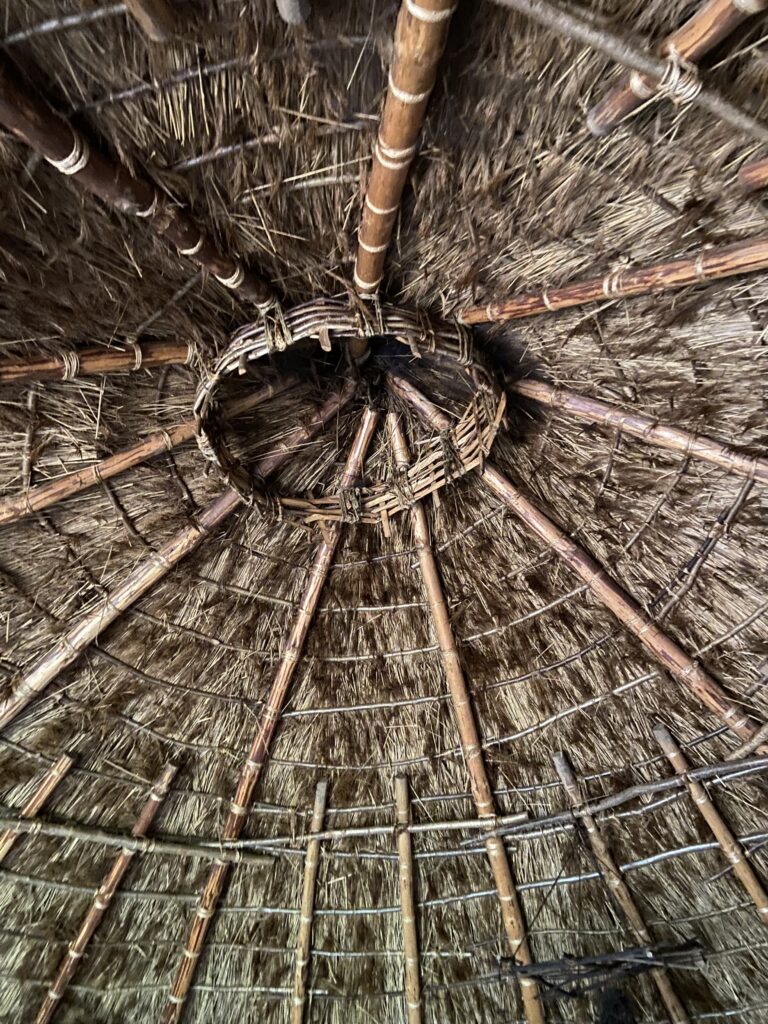

The site also includes Neolithic and Mesolithic houses, Saxon homes and a Roman villa.
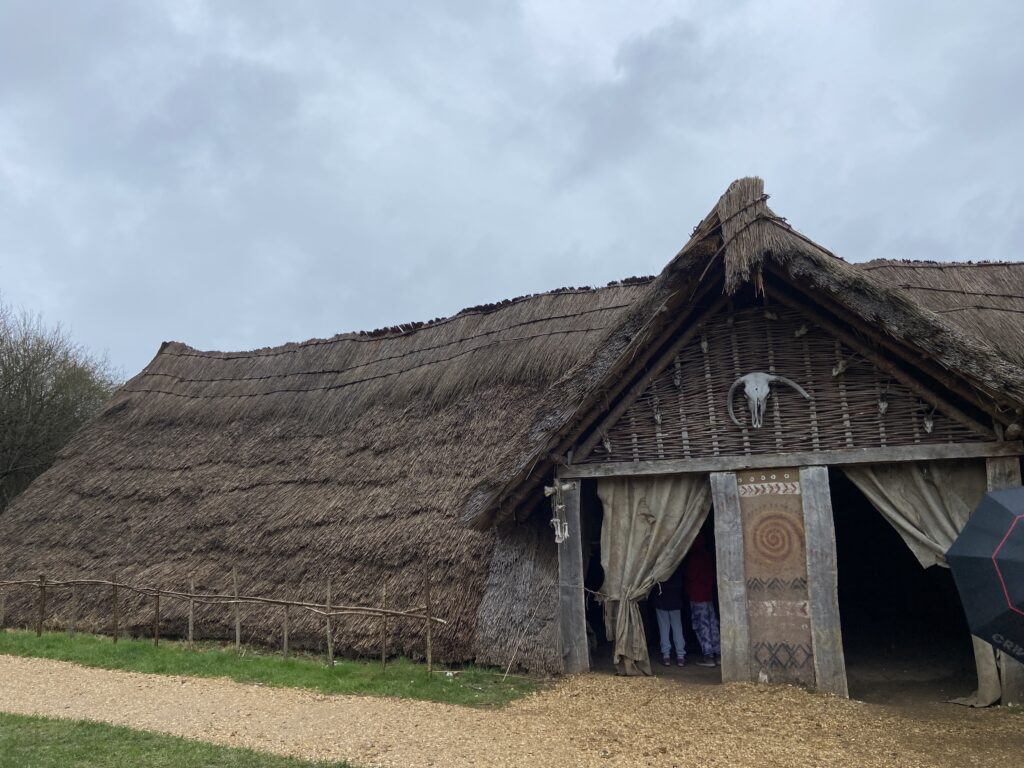

Being half term, there were additional activities in each building and I had a great time trying out techniques of the past. In the Neolithic House was a fascinating experience of artwork. We were given a piece of chalk, which we then coloured using natural materials available. At this time of year it was fairly limited. We rubbed it on the chalk, (charcoal producing black and dead nettle green), then using a piece of flint, etched a pattern into the surface.
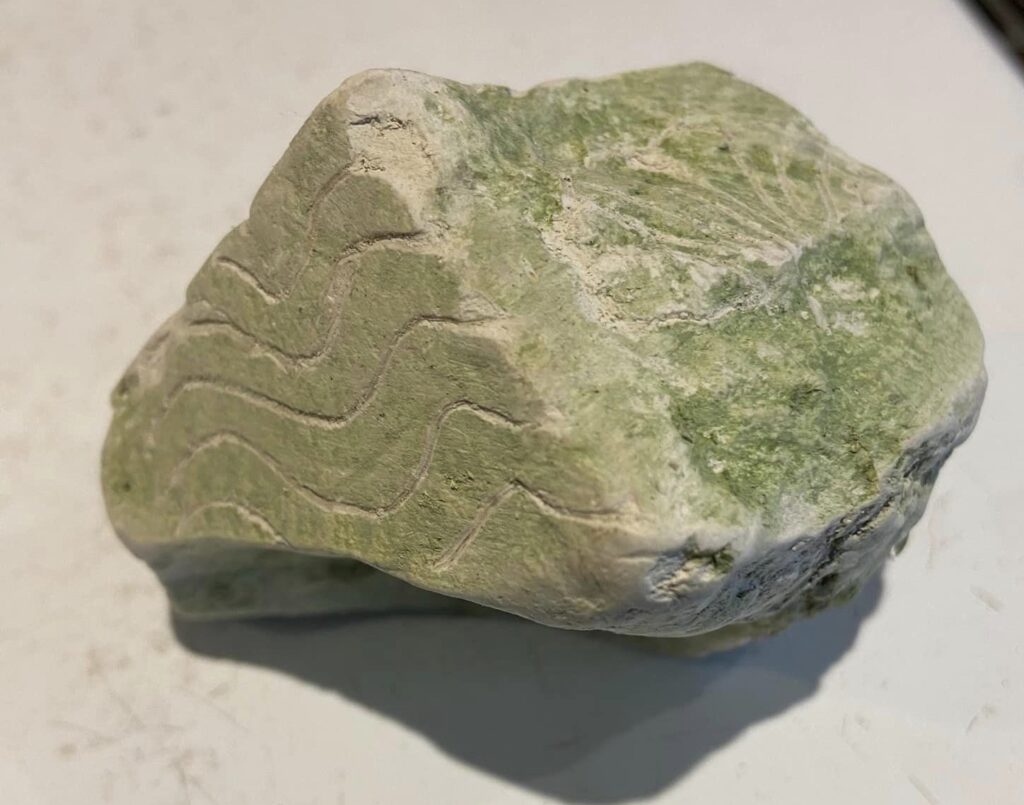
The archaeologist explained that they have discovered chalk artefacts, indicating this was a popular way for Neolithic people to create art. The beauty of it is that when you get fed up with your design, you can scrape the surface clean, re-colour it (dandelions make a great yellow when they are in season) and redo your design. All the materials are freely available from nature and can be returned to the earth with no pollution. I loved it!
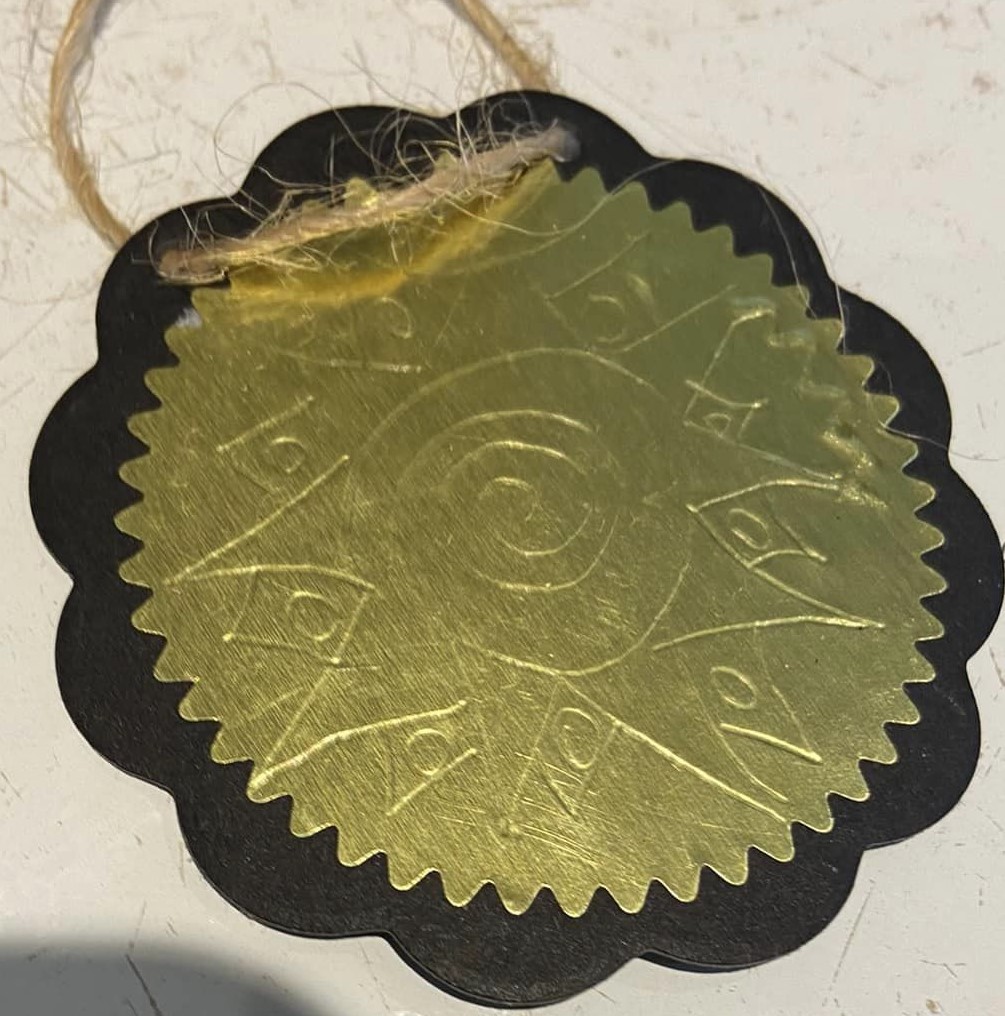
In the Roman villa I spun wool, made a willow star in an Iron Age house and created a sun disc in the Saxon house. Fires were burning in each home, but it didn’t remove the damp and chill. The dusky smell lingered on my clothes, reminding me that everything would have been permeated with smoke, giving a particular scent to life in those times. It also made me appreciate how very cold it must have been and how hardy our ancestors were.
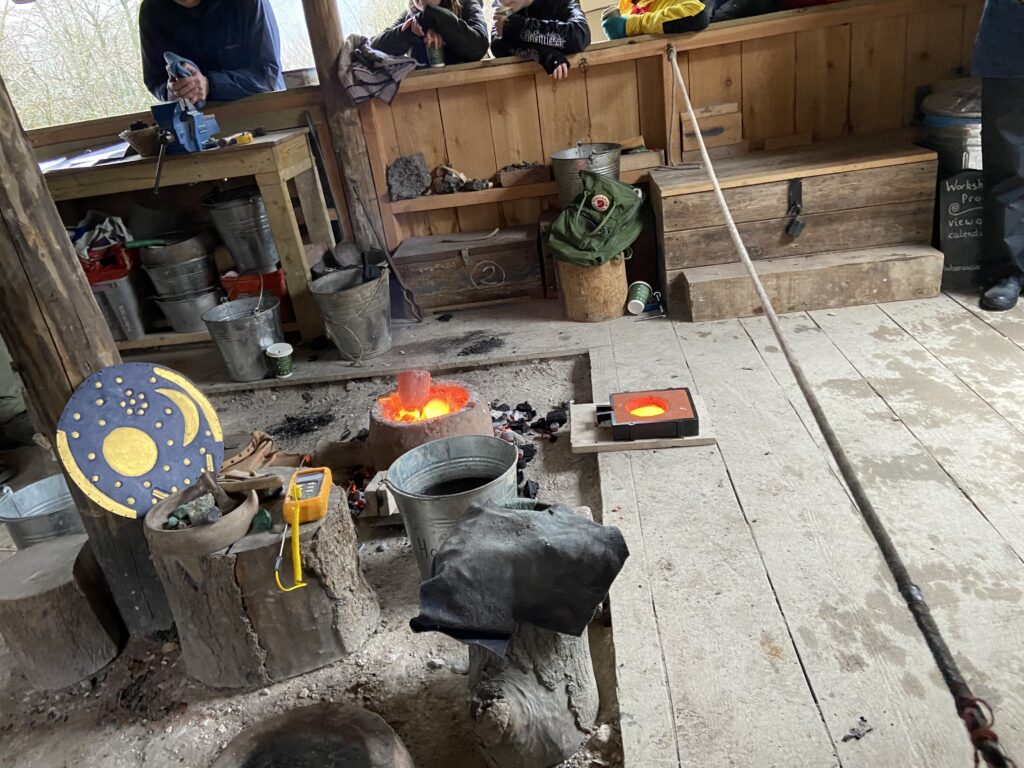
After warming up in a local pub for lunch, I returned for the culminating wonder of metallurgy. The theme of the week was Dark Skies and Ancient Astronomy, with reference to the incredible Nebra Sky Disc which I saw at the British Museum Stonehenge exhibition. Every day during the week, the archaeologists were recreating a scale model of the disc, step by step. I was lucky to witness the smelting and casting stage. It was magical. It underlined the significance of the blacksmith, capable of transforming bare rock into this amazing metal (the warmth from the fire being an additional bonus).
Here is a description of the event.
The bellows softly pump a rhythmic breath, blowing life into the glowing charcoal. At every exhale, sparks flutter and the flames glow a deep red and orange. The crucible nestles in the centre, hardly noticeable, its lid protecting the precious metal inside from contamination. At every beat, warmth floods the area, chilled observers comforted by the heat.
Then the rhythm changes, the pumping of the bellows intensifies, sparks fly in every direction, watchers warned to move out of range. The crucible glows yellowy orange, as if the container itself is a thing of the fire. The lid is carefully lifted, the molten liquid held within, tested, to check for readiness. Not quite. The human intensifies the pumping, sparks scatter, the fire gives a quiet roar, charcoals glow a deep orange.
It is done.
Tongs prepare to do their essential work. The lid is removed, the crucible held and lifted. Magic happens. Alive with a fierce light, stars of fire sparkle and explode as it emerges from its bed of creation. Vibrant amber liquid flows, lave-like, into the mould. We stare, transfixed as the glowing orange fills the shape.

The pot slowly returns to its alter ego, the plain brown clay holder, indistinguishable from its earth mother; its magical transformation retained only in moments of memory. The glowing liquid calms to a dark brown, tipped from the mould.
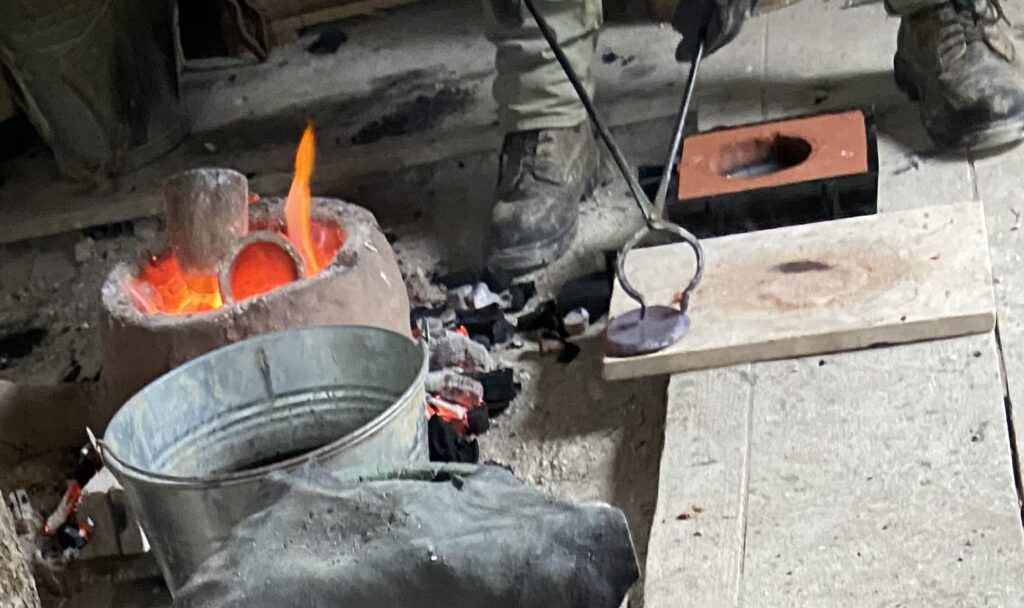
Steam clouds over the fizzing disc, as it is lowered into the cooling bucket of water.

In a miraculously short time, it is safe to handle. I hold this metal marvel, amazement connecting to humans across the millennia. The magic of metallurgy!
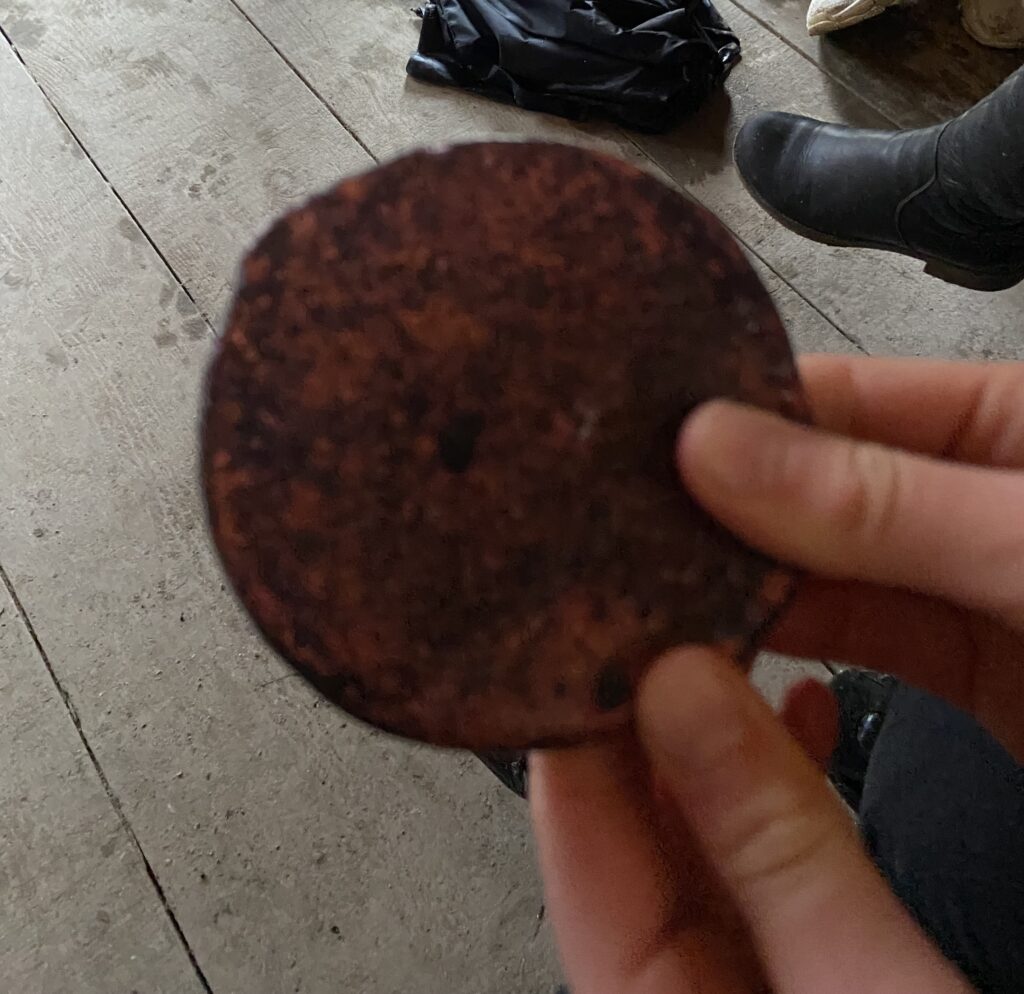
https://www.butserancientfarm.co.uk/
« Back to blog page